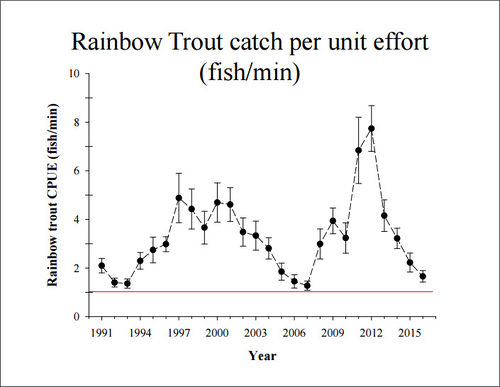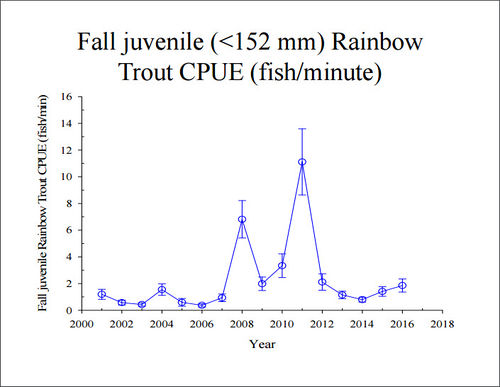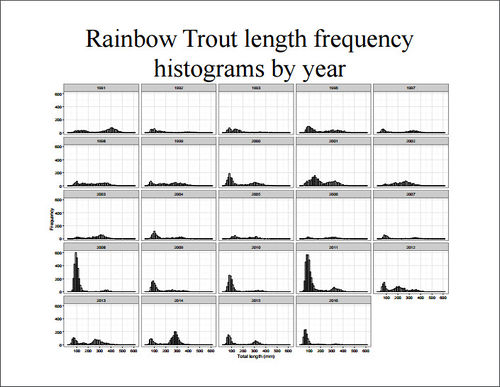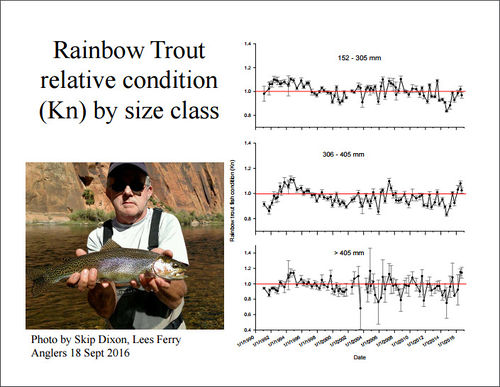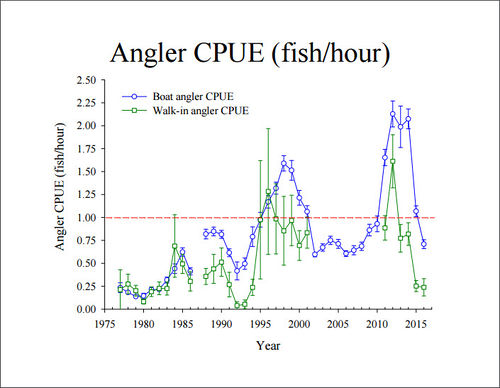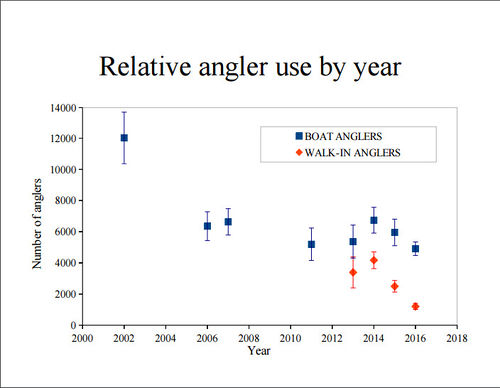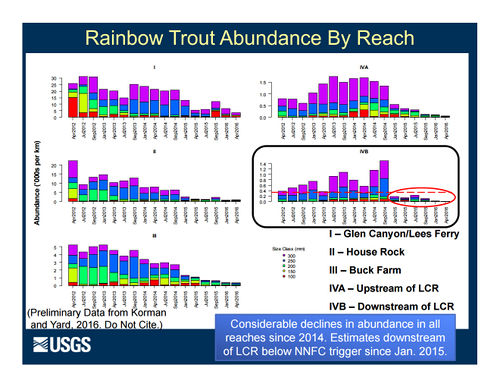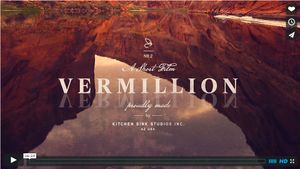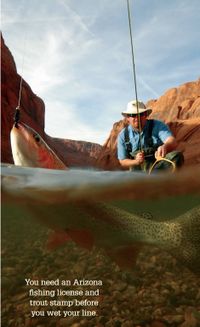Difference between revisions of "FISHERY"
Cellsworth (Talk | contribs) |
Cellsworth (Talk | contribs) |
||
| Line 59: | Line 59: | ||
[[File:RT_AnglerUse_2016.jpg |center|500px]] [https://www.usbr.gov/uc/rm/amp/twg/mtgs/17jan26/AR14_Rogowski.pdf] | [[File:RT_AnglerUse_2016.jpg |center|500px]] [https://www.usbr.gov/uc/rm/amp/twg/mtgs/17jan26/AR14_Rogowski.pdf] | ||
[[File:NO TroutAbundances2016.jpg|center|500px]] [http://www.usbr.gov/uc/rm/amp/amwg/mtgs/16aug24/Attach_07a.pdf] | [[File:NO TroutAbundances2016.jpg|center|500px]] [http://www.usbr.gov/uc/rm/amp/amwg/mtgs/16aug24/Attach_07a.pdf] | ||
| − | + | ||
| − | + | ||
|} | |} | ||
| Line 116: | Line 115: | ||
'''2017''' | '''2017''' | ||
| − | |||
*[https://www.usbr.gov/uc/rm/amp/amwg/mtgs/17feb15/Lees%20Ferry%20Trout.pdf Lees Ferry Trout Fishery Status and PPT] | *[https://www.usbr.gov/uc/rm/amp/amwg/mtgs/17feb15/Lees%20Ferry%20Trout.pdf Lees Ferry Trout Fishery Status and PPT] | ||
*[https://www.usbr.gov/uc/rm/amp/twg/mtgs/17jan26/AR14_Rogowski.pdf Lees Ferry Long Term Monitoring PPT] | *[https://www.usbr.gov/uc/rm/amp/twg/mtgs/17jan26/AR14_Rogowski.pdf Lees Ferry Long Term Monitoring PPT] | ||
| Line 132: | Line 130: | ||
*[http://www.usbr.gov/uc/rm/amp/twg/mtgs/16jan26/documents/AR14_Winters.pdf Long-Term Monitoring of the Lees Ferry Fishery: Update] | *[http://www.usbr.gov/uc/rm/amp/twg/mtgs/16jan26/documents/AR14_Winters.pdf Long-Term Monitoring of the Lees Ferry Fishery: Update] | ||
*[http://www.usbr.gov/uc/rm/amp/twg/mtgs/16jan26/documents/AR15_Bair.pdf Economic value of angling on the Colorado River at Lees Ferry: Using secondary data to estimate the influence of seasonality] | *[http://www.usbr.gov/uc/rm/amp/twg/mtgs/16jan26/documents/AR15_Bair.pdf Economic value of angling on the Colorado River at Lees Ferry: Using secondary data to estimate the influence of seasonality] | ||
| − | |||
*[http://www.nrcresearchpress.com/doi/abs/10.1139/cjfas-2015-0268#.Vr49syArKUm Prey size and availability limits maximum size of rainbow trout in a large tailwater--insights from a drift-foraging bioenergetics model] | *[http://www.nrcresearchpress.com/doi/abs/10.1139/cjfas-2015-0268#.Vr49syArKUm Prey size and availability limits maximum size of rainbow trout in a large tailwater--insights from a drift-foraging bioenergetics model] | ||
| Line 149: | Line 146: | ||
*[http://www.usbr.gov/uc/rm/amp/twg/mtgs/15jan20/Attach_18.pdf Rainbow Trout Growth, Condition, Population Dynamics and Modeling in Glen Canyon] | *[http://www.usbr.gov/uc/rm/amp/twg/mtgs/15jan20/Attach_18.pdf Rainbow Trout Growth, Condition, Population Dynamics and Modeling in Glen Canyon] | ||
*[http://www.usbr.gov/uc/rm/amp/twg/mtgs/15jan20/Attach_19.pdf Drift-Foraging and Bioenergetics Growth Model for Rainbow Trout in the Lees Ferry Tailwater] | *[http://www.usbr.gov/uc/rm/amp/twg/mtgs/15jan20/Attach_19.pdf Drift-Foraging and Bioenergetics Growth Model for Rainbow Trout in the Lees Ferry Tailwater] | ||
| − | |||
'''2014''' | '''2014''' | ||
*[http://www.usbr.gov/uc/rm/amp/twg/mtgs/14oct28/Attach_13.pdf Modeling Long Term Effects of HFEs on Trout and HBC] | *[http://www.usbr.gov/uc/rm/amp/twg/mtgs/14oct28/Attach_13.pdf Modeling Long Term Effects of HFEs on Trout and HBC] | ||
*[http://www.usbr.gov/uc/rm/amp/amwg/mtgs/14aug27/index.html Fisheries Update] | *[http://www.usbr.gov/uc/rm/amp/amwg/mtgs/14aug27/index.html Fisheries Update] | ||
| − | *[http://www.usbr.gov/uc/rm/amp/twg/mtgs/14jan30/AR_Dibble_TailwaterSynthesis.pdf Context and Comparison: Status of Tailwater Fisheries in the Western United States | + | *[http://www.usbr.gov/uc/rm/amp/twg/mtgs/14jan30/AR_Dibble_TailwaterSynthesis.pdf Context and Comparison: Status of Tailwater Fisheries in the Western United States] |
'''2013''' | '''2013''' | ||
| Line 162: | Line 158: | ||
*[https://www.usbr.gov/uc/rm/amp/twg/mtgs/13jun26/Attach_07b.pdf GCMRC Science Update on Sediment and Fisheries] | *[https://www.usbr.gov/uc/rm/amp/twg/mtgs/13jun26/Attach_07b.pdf GCMRC Science Update on Sediment and Fisheries] | ||
*[http://www.usbr.gov/uc/rm/amp/twg/mtgs/13jan24/4_Anderson.pdf Rainbow trout monitoring update] | *[http://www.usbr.gov/uc/rm/amp/twg/mtgs/13jan24/4_Anderson.pdf Rainbow trout monitoring update] | ||
| − | |||
*[https://www.usbr.gov/uc/rm/amp/twg/mtgs/13jan24/4_Anderson.pdf Grand Canyon Rainbow Trout 2012 Monitoring Results] | *[https://www.usbr.gov/uc/rm/amp/twg/mtgs/13jan24/4_Anderson.pdf Grand Canyon Rainbow Trout 2012 Monitoring Results] | ||
| − | |||
|- | |- | ||
| Line 175: | Line 169: | ||
There is an ongoing [[FOOD BASE| '''aquatic food base study''']] that has taken place over the past couple of years. The purpose of this study is multifaceted and is studying the relationship of flows on food production, taking inventories of and monitoring populations of aquatic insects and invertebrates that live in the river and other very important aspects of the aquatic food base. I believe that this is by far the most important study that has ever been conducted on this river. Previously, hundreds of millions of dollars have been spent studying sediment while ignoring the aquatic food base and resource. Common sense dictates that fish, birds and animals do not live off of dirt or sand. The aquatic food base and habitat are the foundation for all that lives in the Colorado River. One of the long term goals of the food base study is to determine how to enhance the populations and production of aquatic insects in the river which will benefit native fish, trout, and migratory bird populations. This is a study and a goal that we can all embrace! | There is an ongoing [[FOOD BASE| '''aquatic food base study''']] that has taken place over the past couple of years. The purpose of this study is multifaceted and is studying the relationship of flows on food production, taking inventories of and monitoring populations of aquatic insects and invertebrates that live in the river and other very important aspects of the aquatic food base. I believe that this is by far the most important study that has ever been conducted on this river. Previously, hundreds of millions of dollars have been spent studying sediment while ignoring the aquatic food base and resource. Common sense dictates that fish, birds and animals do not live off of dirt or sand. The aquatic food base and habitat are the foundation for all that lives in the Colorado River. One of the long term goals of the food base study is to determine how to enhance the populations and production of aquatic insects in the river which will benefit native fish, trout, and migratory bird populations. This is a study and a goal that we can all embrace! | ||
| − | Quagga mussels have become established in Lake Powell and we are now seeing some in the river below the dam. Their arrival in the river happened sooner than I expected. So far, there has not been a major infestation and there is some thought by experts that they will not become very well established in the river due to the current. Be aware and remember to dry waders and boots before using them in any other body of water. Also, all private boats should drain all water from the boat and live-wells as soon as you exit the river. We all need to do our part to limit the transport of this and all invasive species | + | [http://gcdamp.com/index.php?title=Quagga Quagga mussels] have become established in Lake Powell and we are now seeing some in the river below the dam. Their arrival in the river happened sooner than I expected. So far, there has not been a major infestation and there is some thought by experts that they will not become very well established in the river due to the current. Be aware and remember to dry waders and boots before using them in any other body of water. Also, all private boats should drain all water from the boat and live-wells as soon as you exit the river. We all need to do our part to limit the transport of this and all invasive species. |
| − | + | ||
| − | + | ||
| − | + | ||
| − | + | ||
| − | + | ||
| − | + | ||
| − | + | ||
| − | + | ||
| − | + | ||
| − | + | ||
| − | + | ||
| − | + | ||
| − | + | ||
| − | + | ||
| − | + | ||
| − | + | ||
| − | + | ||
| − | + | ||
| − | + | ||
| − | + | ||
| − | + | ||
| − | + | ||
| − | + | ||
| − | + | ||
| − | + | ||
| − | + | ||
| − | + | ||
| − | + | ||
| − | + | ||
| − | + | ||
| − | + | ||
| − | + | ||
| − | + | ||
| − | + | ||
|- | |- | ||
| Line 219: | Line 179: | ||
[[File:040513 AZGF- Fishing Pic.jpg|right|200px]] '''[http://gcdamp.com/images/6/6b/12-15_Lees_Ferry_Jan-Feb_2012_Views_%281%29.pdf Arizona Game and Fish Wildlife Views Article titled "Tight Lines at Lees Ferry". Published February 2012]''' | [[File:040513 AZGF- Fishing Pic.jpg|right|200px]] '''[http://gcdamp.com/images/6/6b/12-15_Lees_Ferry_Jan-Feb_2012_Views_%281%29.pdf Arizona Game and Fish Wildlife Views Article titled "Tight Lines at Lees Ferry". Published February 2012]''' | ||
| − | |||
| − | |||
| − | |||
| − | |||
|} | |} | ||
| Line 229: | Line 185: | ||
===''Quick Facts''=== | ===''Quick Facts''=== | ||
| − | |||
| − | |||
'''Visitor Use and Experience''' | '''Visitor Use and Experience''' | ||
| − | |||
*Visitor Experience as it relates to fisheries, include opportunities to fish for rainbow trout in GCNRA's Glen Canyon Reach, which has been referred to as '''[[GCDAMP- Blue Ribbon Trout Fishery| Blue Ribbon]]''' by the State of Arizona, and to fish for rainbow and brown trout and a variety of non-native introduced fish species in the main stem Colrado River and some tributaries in GCNP. Most angling in GCNP occurs in or near Bright Angle Creek and Phantom Ranch, particularly in fall and spring (NPS 2006c) | *Visitor Experience as it relates to fisheries, include opportunities to fish for rainbow trout in GCNRA's Glen Canyon Reach, which has been referred to as '''[[GCDAMP- Blue Ribbon Trout Fishery| Blue Ribbon]]''' by the State of Arizona, and to fish for rainbow and brown trout and a variety of non-native introduced fish species in the main stem Colrado River and some tributaries in GCNP. Most angling in GCNP occurs in or near Bright Angle Creek and Phantom Ranch, particularly in fall and spring (NPS 2006c) | ||
*Definition of a [http://en.m.wikipedia.org/wiki/Blue_Ribbon_fisheries '''Blue Ribbon fishery'''] | *Definition of a [http://en.m.wikipedia.org/wiki/Blue_Ribbon_fisheries '''Blue Ribbon fishery'''] | ||
| + | *[http://www.gcdamp.gov/fs/LeesFTF.pdf GCDAMP- Public Outreach- Lees Ferry Trout Fishery] | ||
| − | |||
---- | ---- | ||
| + | |||
'''HISTORY''' | '''HISTORY''' | ||
| − | |||
*In 1991 the Arizona Game and Fish stocked large trout instead of fingerling trout to maintain the Lees Ferry trout sport fishery ''(090711_Minority Report to TWG_FFF_Mark Steffen)'' | *In 1991 the Arizona Game and Fish stocked large trout instead of fingerling trout to maintain the Lees Ferry trout sport fishery ''(090711_Minority Report to TWG_FFF_Mark Steffen)'' | ||
| − | |||
==Additional Links== | ==Additional Links== | ||
| − | |||
*[http://gcdamp.com/index.php?title=Bishop_Study Bishop Study and Angler Preferences] | *[http://gcdamp.com/index.php?title=Bishop_Study Bishop Study and Angler Preferences] | ||
Revision as of 14:48, 28 April 2017
|
|
The Lees Ferry Rainbow Trout FisheryIn 1964, the Lees Ferry tailrace on the Colorado River was given birth by the completion of Glen Canyon Dam, which impounded Lake Powell. Subsequent water releases from the bottom of Lake Powell changed the once highly turbid, warm waters of the Colorado River into a constant cold (46-50°F), clear flowing river. Shortly after completion of the dam, the Arizona Game and Fish Department stocked rainbow trout (Oncorhynchus mykiss) in the 15-mile Lees Ferry reach and, in 1981, began to manage this section of river as a Blue Ribbon rainbow trout fishery. The trout began to flourish in the Lees Ferry reach from 1970-1985 when catches of rainbow trout above 10-pounds were not uncommon, and angler pressure was relatively low. In 1991, however, the Bureau of Reclamation implemented the Record of Decision flow regime, which consisted of higher minimum and more stable flows and allowed for increased trout reproduction and survival. Under these conditions, a huge population of trout developed causing individual fish growth rates to decline. Quite simply, there was a large number of fish competing for limited space and food items, resulting in a fishery where trout less than 14-in were dominant. In 2000, the Arizona Game and Fish Department began a long-term monitoring program sponsored by Grand Canyon Monitoring and Research Center to determine the effects of Glen Canyon Dam operation on the trout fishery at Lees Ferry and to make recommendations for improving this fishery. Since 2000, our data collection has shown an increase in the general health of all trout age classes (especially since 2002). This increase in fish health is usually associated with an increase in growth rates. There has been a marked increase in catch rates of young-of-the-year fish in recent years. With successful spawning and recruitment continuing to occur, fishing conditions in Lees Ferry are improving. [1] Desired Future Condition for the Lees Ferry Trout FisheryA high quality trout fishery in GCNRA, as further described in the Recreation DFC that does not adversely affect the native aquatic community in GCNP. |
| File:RainbowTrout1.jpg* Rainbow Trout |
File:BrownTrout1.jpg* Brown Trout |
|---|

